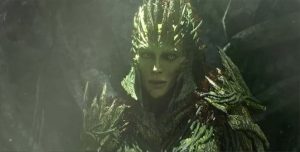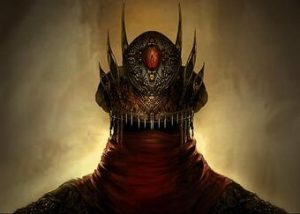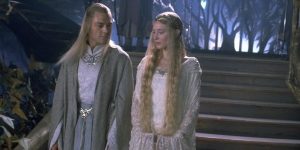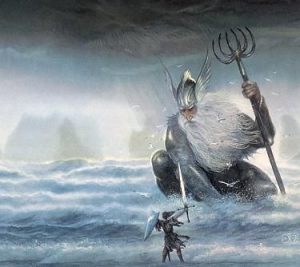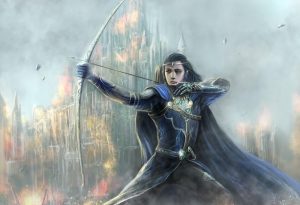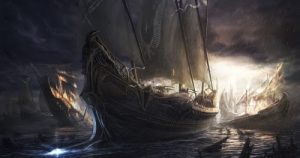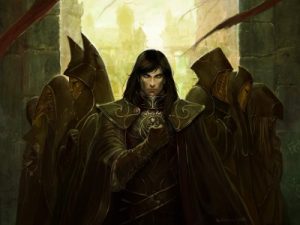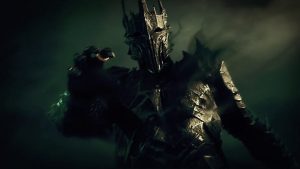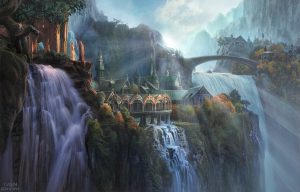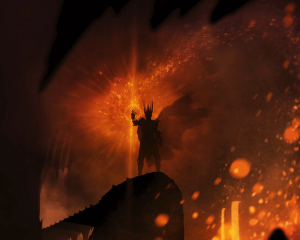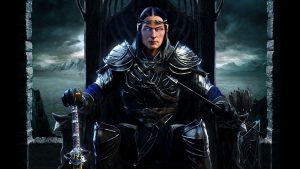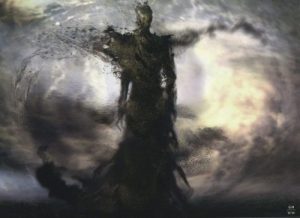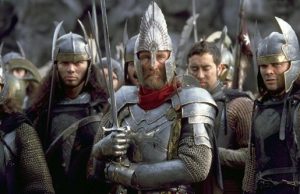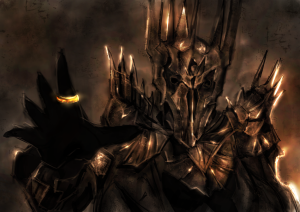The past few days, we’ve been through all the basics: what Amazon Prime needs to do in their upcoming The Lord Of The Rings adaptation; what they should do; and, of course, what they should never do. So with that in mind…how many more “Top 10” lists can I think of? The answer is: at least one more, because today we’ll be looking at the ten characters I’m most hyped to see in The Lord Of The Rings.
As always, let me throw out a quick reminder to all of my readers who haven’t been following along (though, if you haven’t been at least following this series of posts, then why are you here now?): Amazon Prime’s series is not a straight-up adaptation of the best-selling novel by J.R.R. Tolkien – instead, it’s set at least three-thousand years prior to the events of that story, during a time period known as the Second Age. Thus, most of the characters you know and love won’t show up in the series, except a handful of immortals such as Galadriel, Elrond, Thranduil, and Sauron. All of these characters, however, will be either significantly younger, or just very different with regards to personalities, appearances, motivations, etc.
So, without further ado, let’s take a look at my list, shall we?

10: Thranduil. Firstly, let me apologize for a glaring factual error in one of my previous posts, where I referred to Thranduil and his father Oropher, both Sindarin Elves of great prestige, as Silvan Elves. In fact, it’s partially because of this error that I realized Thranduil belongs on this list – the King of the Elves of Mirkwood (called Greenwood in the Second Age, and ruled from the hilltop city of Amon Lanc, which would later fall into ruin and be renamed Dol Guldur) was a Sindarin Elf who nonetheless looked out for his Silvan citizens and treated them with respect and benevolence, seemingly even adopting their “rustic” customs – at least in The Hobbit, where he’s most commonly found feasting in the woods, hunting wild animals or merrymaking. This is the Thranduil I want to see: he should still have some of Lee Pace’s steely, ice-cold hostility, but in private, I’d love for the King of the Woodland Elves to open up to his citizens, to share in their traditions, and to come across as a powerful leader and a guardian for his people.
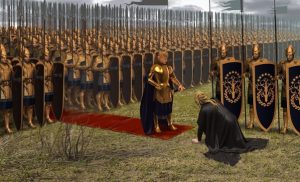
9: Ar-Pharazôn. Whereas Thranduil was actually a decent guy, Ar-Pharazôn, the twenty-fifth and final king of Númenor, only gets worse when you learn more about him. On the surface, he doesn’t seem too bad: he was just a particularly strong-willed, stubborn and slightly dim-witted military commander who happened to get tricked by Sauron into declaring war on the gods and invading paradise, right? But how did he become King of Númenor in the first place? Well, by unlawfully marrying his cousin against her will, of course. The Dark Lord Sauron, ostensibly the King’s prisoner, flattered Ar-Pharazôn with lies until he was at last given freedom to come and go as he pleased in Númenor. It wasn’t long before Ar-Pharazôn had consented to worshiping the ancient evil Morgoth, and the ritual sacrifice of political prisoners. He burned the White Tree of the Elves, severing that link between the two peoples. And, yeah, he did also doom his country (not to mention untold numbers of his own citizens) to a horrific, watery end – all because he thought he could live forever if he bested the gods in open warfare. Still, I can’t wait to see this villainous puppet of Sauron’s get pulled apart in real-time.

8: Elrond. We’ve seen Elrond Half-Elven, master of the Last Homely House of Rivendell and bearer of the Ring of Air, a couple of times on the big screen before – but always as a stern, proud scholar with a particularly melancholy attitude towards life and humans in general (not entirely surprising: considering that most of the problems of the Second Age resulted from his brother’s decision to become a human Man instead of an Elf). The Elrond that we’ll meet in Amazon’s Lord Of The Rings is going to be very young by Elven standards: so when I consider what his personality might be like, I imagine him as a generally optimistic and light-hearted individual who hasn’t yet been weathered and worn down by centuries of pain and sorrow. He hasn’t probably even met his future wife, Celebrían (who will eventually be tortured by Orcs until she can no longer bear to live in Middle-earth), and he has no idea he’ll one day be called upon to bear the weight of one of the Three Rings (which I’m sure King Gil-galad will give to him shortly before his brutal death at the hands of Sauron). Let’s just say: he’s in for a ride.
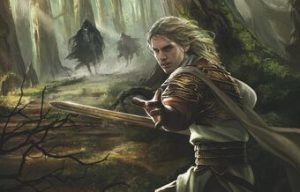
7: Glorfindel. This guy is one of the coolest in all of Middle-earth’s history – and when I say all of it, I mean all of it, because he’s been around for just as long as characters like Galadriel and Círdan, and been to Valinor, Middle-earth, the Halls of Mandos and everywhere in between. Originally an Elf of Gondolin who sacrificed his life to save fleeing refugees in the First Age, Glorfindel was judged to be so pure and good that he was almost immediately reincarnated and sent back to Middle-earth to help out the Elves during their war with Sauron in the Second Age. Not only that, but he was given semi-magical powers that put him almost on the level of Maiar like Gandalf. Throughout the Second Age, he fought alongside the Elves, rarely using his powers in war, and continued on into the Third Age as a great warrior and hero of legend, challenging the Witch-King, leading armies and rescuing Frodo Baggins. Remind me again why Legolas was chosen to represent the Elves on Frodo’s quest and not Glorfindel? Oh right, because Glorfindel was so powerful that Sauron would have sensed him coming from miles away, that’s why. Yet despite this, we’ve never seen him onscreen. Even if they do nothing else right, I will be forever grateful to Amazon if they make Glorfindel a major player in the series.
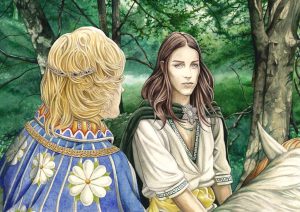
6: Erendis. In The Lord Of The Rings, there are far fewer women characters than men, and even some of the most prominent, like Galadriel and Arwen, are still only in a couple of chapters. But that’s not the case in the Second Age and Middle-earth’s ancient histories, where strong and complex women populate the legends – and one of the most interesting is Erendis. This Númenórean noblewoman put up with a lot; from her husband, her family, and her patriarchal society. But she wasn’t afraid to make enemies (she even publicly declared herself to be the personal nemesis of the divine Maia, Uinen, one of Númenor’s patron goddesses), and she stood her ground when attacked for her beliefs – which were radical for her time, as she counseled her daughter never to submit to the will of men. She’s loud, she’s persistent, and she’s exactly the type of character I want to see in Amazon’s Lord Of The Rings.
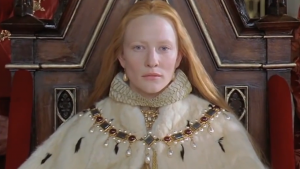
5: Tar-Ancalimë. Erendis’ daughter was no less interesting: neglected by her absent father and raised only by her mother and the women of their sheep-farm, Ancalimë almost never encounters men before suddenly becoming the first ruling Queen of Númenor. This scenario screams to be depicted onscreen: in my mind, I picture it playing out much like the film Elizabeth (in which The Lord Of The Rings‘ very own Cate Blanchett starred in the lead role), but with the newly-crowned Tar-Ancalimë having no one to turn to for counsel but herself and the advice of her mother. We don’t know much about the Queen’s reign, save that it was one of the longest in Númenórean history, and, in an act of revenge against her father, she withheld aid from her father’s ally, Gil-galad, during his war against Sauron. With so much blank space, there’s plenty of room to write new material.
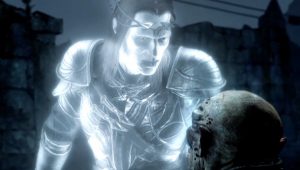
4: Celebrimbor. Though only briefly mentioned in The Lord Of The Rings proper, Celebrimbor is one of the few Second Age characters that general audiences might know, thanks to the incredible popularity of the Shadow Of Mordor video games – the games themselves are not a very accurate adaptation of Middle-earth (as should have been obvious when they had Celebrimbor’s ghost team up with a Gondorian Ringwraith, a human version of Shelob, and Gollum to forge his own Ring and take down Sauron), but they did at least introduce a bunch of people to the character of Celebrimbor, and his identity as the craftsman behind the Rings of Power. Last of the line of Fëanor, Celebrimbor inherited much of his grandfather’s rebellious attitude, though he is generally viewed in a more positive light than his violent ancestors. Most of his faults were either exacerbated by or derived from Sauron, who deceived Celebrimbor into trusting him. Sadly, that was to be Celebrimbor’s fatal mistake, and he was killed after months of exhausting torture, refusing to disclose the locations of the other Rings of Power that he had forged. The Elf’s mangled body soon became one of Sauron’s favorite military souvenirs and hung from a banner when the Dark Lord marched into battle.
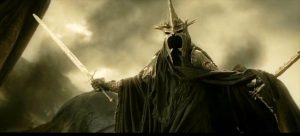
3: The Witch-King. Very little is known about any of the nine mortal men doomed to die, all of whom willingly bound their lives to the fate of Sauron and his One Ring in a bid for…what, exactly? Did they desire immortality? Magic? Power? We don’t know. Tolkien wrote that at least three of them were Númenóreans – likely imperialist military officers dispatched to Middle-earth to safeguard the empire’s colonies, who fell under the Dark Lord’s sway while there. Some of them may have been sorcerers. The only named member of the Nine was Khamûl, and he was an Easterling. But who was the enigmatic Witch-King, whom prophecy foretold would never be slain by any man? There’s no hint as to his true name, personality, or motivation for accepting one of the Nine Rings – which means Amazon Prime can do whatever they want with the character.
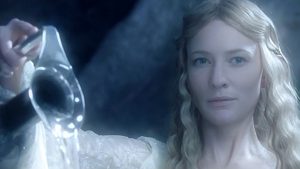
2: Galadriel. She’s always been my favorite character in the Tolkien legendarium, and not just because she was masterfully portrayed by Cate Blanchett in Peter Jackson’s trilogy. In Tolkien’s published works, you only see a tiny fraction of this heroine’s long and eventful life in Middle-earth: it’s only when you begin to find mentions of her in The Silmarillion and Unfinished Tales that you realize she is fascinating, nuanced, and, honestly, more complex than most of Tolkien’s male heroes. She started out as a woman of great physical strength, who participated in a variety of sports in her homeland of Valinor and was described as being an Amazon. She openly defied the Valar and chose to leave Valinor to pursue fortune and glory in Middle-earth, and when called upon to repent for that “crime” at the end of the First Age, she refused. She was an open-minded and intelligent leader: she fostered a close friendship with the Dwarves when other Elves shunned them, and she viewed them with the keen eye of a commander, helping them to ready their armies against Sauron’s onslaughts in the Second Age. She and her husband traveled all over Middle-earth, searching for allies in the coming war, settling in several different locations. She presumably led troops into battle on many occasions. In the Third Age, she gave magical aid to heroes such as Eorl and Frodo Baggins, and she entered Dol Guldur and drove back the darkness that hung over Mirkwood. And these are just the highlights of her life! If she’s not also my favorite character in the Amazon Prime series, I’d be very surprised.

1: Sauron. The only character I could see possibly vying with Galadriel for my undivided affection in the Second Age is…Sauron, base master of treachery, shape-shifting dark wizard and sadistic fallen angel. But that’s because Sauron, while he is indeed a villain, is still a villain with a purpose – and a good one, too. Originally a divine Maia whose chief virtue was supposedly perfectionism, Sauron was allured by the demonic deity Morgoth, whose visionary ideas of reformation appealed to him. Sauron, however, disagreed with Morgoth on many issues: in particular, he had no desire to see the world destroyed, instead hoping for a future in which he could be Middle-earth’s sole leader, and build a perfect utopia for himself and all his loyal subjects. Upon Morgoth’s fall, Sauron decided to make this a reality: he refused to repent for his crimes against the Valar, instead taking a beautiful human form and going among the Elves, offering them a chance to rebuild the world alongside him. At this point, Tolkien was explicit in saying that he was not fully evil. He did, in fact, want to make the world a better place – but because he could not be content with any imperfection in his plan, and because he had turned away from the teachings of Eru, the True God, and so could only mimic Morgoth’s flawed designs, he failed in his purpose and slipped into a feral rage, becoming tyrannical and too ambitious to be contained. That’s a great villain arc right there: all too often I hear people say that Sauron is a one-dimensional floating eye in the sky (I mean, it’s hard to even find an image for this post that isn’t of him as a floating eye!), and all I have to say to those people is that they’re wrong, and I will not tolerate your foolish arguments…and yes, I realize I just sounded like Sauron, so what?
Do you like my list? Would you add a couple more characters to it, or remove some? Share your own thoughts, theories and opinions in the comments below!
